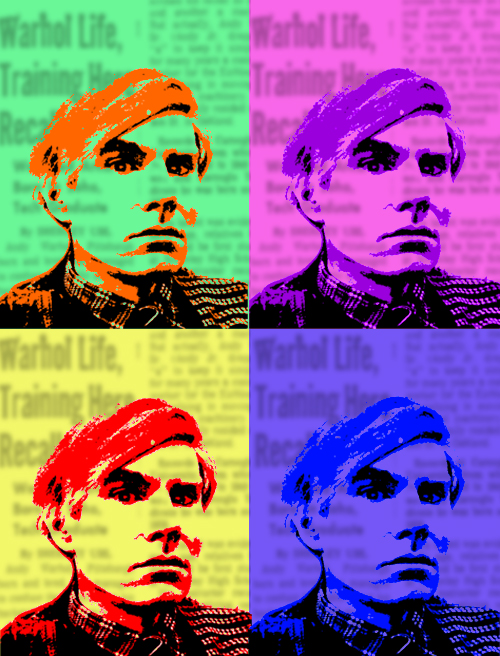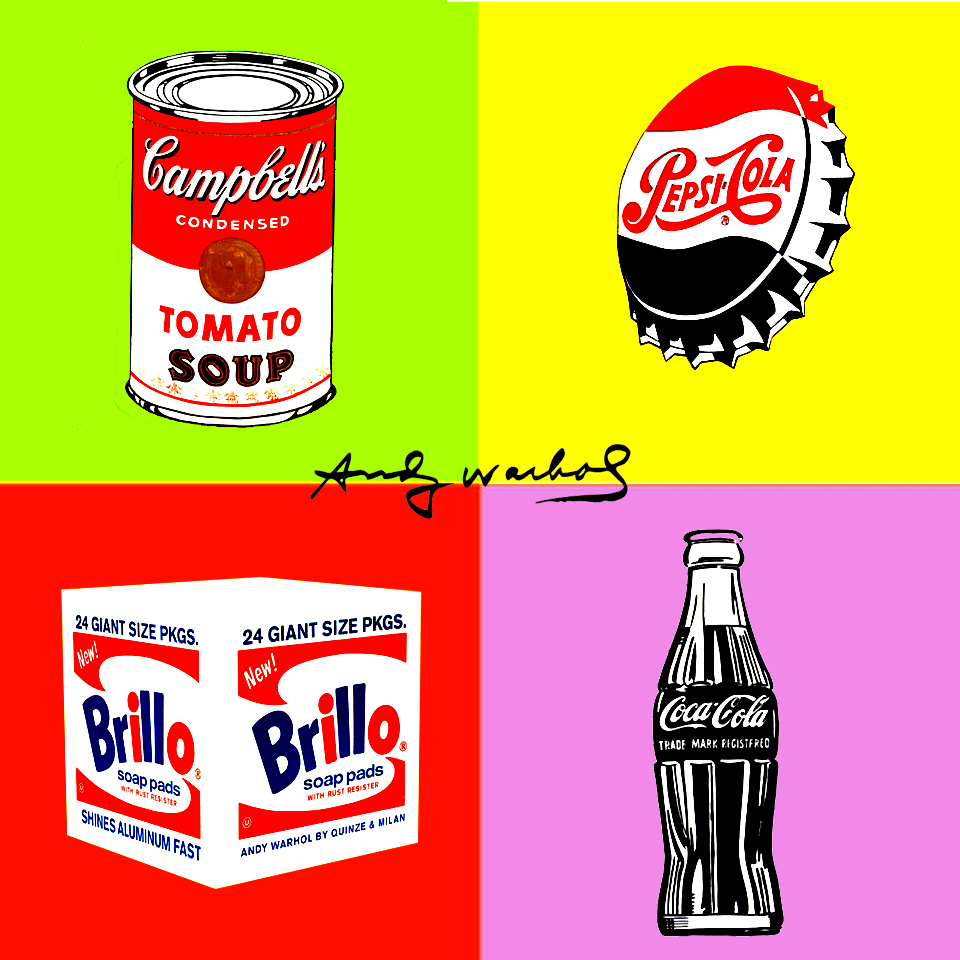Andy Warhol: From Obscurity to Pop Culture Icon
August 28.24 / Blog: / 6 min. read
The Prelude:
In the dynamic world of contemporary art, few names resonate as strongly as Andy Warhol.
With his unconventional approach and innovative style, Warhol carved a unique path to fame, overcoming obstacles to become a beacon of artistic revolution.
We delve into the life, triumphs, and defining characteristics of Andy Warhol’s art that have solidified his enduring legacy in pop culture history.

Obscurity to Pop Culture Icon
Born in Pittsburgh, Pennsylvania, in 1928, Andy Warhol showed early artistic promise. His journey to fame, however, wasn’t a straightforward one.
Starting as a commercial illustrator, he gained recognition for his whimsical drawings that combined fine art with commercial elements.
His breakthrough moment came in the 1960s when he transitioned to creating iconic works that would reshape the art scene.
Obstacles & Triumphs!
Warhol’s path to success was not without hurdles. His transition from commercial art to fine art was met with skepticism, yet he remained resilient in pursuing his unique vision.
One of his most significant triumphs was the establishment of “The Factory,” his creative studio that became a hub for artists, musicians, celebrities, and counter-culture figures.
This environment not only fueled his creativity but also allowed him to expand his influence beyond the canvas.
What made his art stand out?
Warhol’s art stood out for its distinct blending of consumer culture, celebrity, and artistic expression.
He embraced the everyday and the mundane, turning objects like Campbell’s Soup cans and Brillo boxes into captivating subjects.
His obsession with mass-produced items underscored his commentary on the commodification of art and culture, leading to a reevaluation of how art is defined and valued.
Defining his place in pop culture history!
Andy Warhol’s art defined a pivotal moment in pop culture history. His innovative techniques, such as silk-screening and the use of vibrant colors, gave his work a bold and contemporary edge.
His celebrity portraits, including Marilyn Monroe and Elvis Presley, became symbols of the era’s fascination with fame and glamor.
By intertwining high art with popular culture, Warhol challenged traditional artistic boundaries and established a new paradigm that continues to resonate today.

They always say time changes things, but you actually have to change them yourself.Andy Warhol
Exploring the Masterpieces: Top Artworks of Andy Warhol.
Andy Warhol, an art icon of the 20th century, left an indelible mark on the world with his innovative techniques and boundary-pushing concepts. From his pioneering exploration of consumer culture to his captivating celebrity portraits, Warhol’s artworks have become synonymous with the era’s cultural and artistic transformation. In this article, we delve into some of the most iconic art pieces that define Warhol’s legacy and continue to captivate audiences worldwide.

The Last Supper (1986):
Warhol’s “The Last Supper” series, inspired by Leonardo da Vinci’s masterpiece, reinterprets the iconic scene using his distinct style.
Executed in his final years, this series is a reflection of Warhol’s contemplation of mortality, spirituality, and his Catholic upbringing.
The vibrant colors and repeated images offer a fresh perspective on a timeless subject.
Self-Portrait (1986):
Warhol’s self-portraits offer a glimpse into his evolving persona and artistic journey.
The 1986 self-portrait stands out for its bold use of color and the way it captures Warhol’s enigmatic personality.
This piece reflects his desire to be both the observer and the observed, a theme that runs through much of his work.
Campbell’s Soup Cans (1961-1962):
Perhaps one of Warhol’s most recognizable series, the “Campbell’s Soup Cans,” elevated everyday items into art.
Consisting of 32 paintings, each representing a different soup variety, this series marked the inception of Pop Art.
Warhol’s repetition of the same image reflects the monotony of mass-produced consumer goods, while also celebrating their ubiquity in American culture.
Marilyn Diptych (1962):
In the “Marilyn Diptych,” Warhol immortalized the legendary Marilyn Monroe using his signature silk-screening technique.
This artwork simultaneously captures Monroe’s glamour and the fleeting nature of celebrity.
The repeated images and fading colors on one side of the diptych evoke the transformation of Monroe’s persona from vibrant star to tragic figure.
Eight Elvises (1963):
“Eight Elvises” showcases Warhol’s fascination with celebrity and pop culture.
This painting features eight identical Elvis Presley images, reflecting the superstar’s ubiquity and the idea of manufactured identity.
The work serves as a commentary on the impact of fame and how it can create a sense of mass-produced persona.
Brillo Boxes (1964):
Warhol’s “Brillo Boxes” epitomize his exploration of the boundaries between art and everyday objects.
These sculptures, meticulously recreated to resemble actual Brillo soap pad boxes, challenge the traditional notion of art by questioning what can be considered a work of artistic expression.
The piece highlights his fascination with commercialism and consumer goods.
This piece is a powerful reminder of how Andy Warhol rose from obscurity to a pop culture icon.
Wrap-Up:
Andy Warhol: A Cultural Icon
Warhol was a force of nature, a tornado of creativity that ripped through the art world. His life was a testament to sheer determination, a relentless pursuit of artistic expression. From humble beginnings, he ascended to the pinnacle of pop culture, leaving an indelible mark on the art scene.
Warhol’s genius lay in his ability to blend art with the mundane, to elevate the ordinary to the extraordinary. His works were a reflection of consumer culture, a commentary on celebrity and fame. He challenged traditional notions of art,pushing boundaries and defying expectations.
His knack for seamlessly intertwining art with consumer culture etched an unforgettable impression on the art realm, securing his status as a dynamic and indispensable figure in the chronicles of creative history.
Warhol’s legacy endures, inspiring artists and fans alike. His works continue to resonate with audiences, offering a glimpse into the shifting cultural landscape and the mind of a true visionary. From his explorations of consumer culture to his fascination with celebrity, Warhol’s art is a timeless testament to the power of creativity.
As we ponder upon his legacy, it becomes evident that Andy Warhol’s contributions have not only molded the art sphere but also continue to kindle the inventive fervor of new artist generations and enthusiasts alike.
Andy Warhol’s rise from obscurity to pop culture icon is a testament to his talent, determination, and unique vision.
Dive deep into the Warhol world, here are a few reliable online resources;
The Andy Warhol Museum, Here
The Metropolitan Museum of Art, Here
Tate Modern, Here
The Museum of Modern Art, Here

What do you think about Andy Warhol’s journey from obscurity to pop culture icon?
Warning: These other articles might make you think. If you hate reading and gaining knowledge, do not click this link

